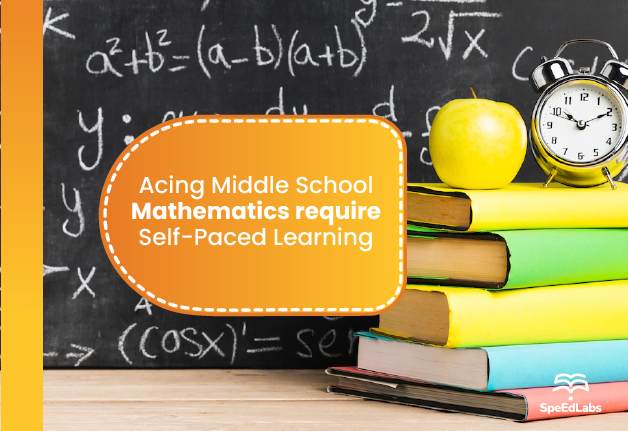We developed the ability to learn the necessary information to go about our daily lives regardless of how long it took us to learn our native language or multiplication.
Learning new information became easier after we identified our preferred learning style.
However, our preferred learning style was most likely not always available to us as children.
Standardised tests, academic resources, and the education system most likely provided you with a one-size-fits-all education, depending on where you grew up.
That is incompatible with the modern digitised era, in which various types of learning methods and types are available.
What exactly is Self-Paced Learning?
Self-paced learning differs from traditional teacher-led, whole-class lessons in that it allows students to customise how they learn in class by using materials and resources. Students can design their own learning experience using the self-paced method, not only at their own pace but also based on their own interests and learning preferences. The instructor’s role is to provide guidance, and feedback on proficiency, and to tailor the learning environment to the needs of the students.
Self-paced Learning to Ace Middle School Mathematics
The advantages of self-paced learning vary depending on the type of learner it produces. Here are some of the most important and beneficial aspects of self-paced learning when studying Math.
- They Learn at their own Pace.
Students learn at their own pace during self-study, focusing more on areas that interest them or that they understand better. This alleviates feelings of frustration, anxiety, or boredom that students may experience in the classroom. Therefore, they can pick up the topics in Mathematics that they want to practice first.
- Promotes Ownership of Learning.
This act of children taking complete ownership of their learning can result in a flood of knowledge for themselves. Therefore, if they have decided to do one chapter, they would own the responsibility of doing it properly.
They become their masters. Students decide what to do and when to do it, and how long to study or whether to re-study. Students gain a tremendous sense of self-confidence by self-learning, which helps them deal with all of life’s possibilities.
They have an insatiable desire to learn more and more, so they conduct in-depth research to broaden their knowledge. Such is the power of self-paced learning, which enables them to prepare for the future with resilience and complete immunity.
- Improved Learning Insights.
With better data insights, students who self-learn have more opportunities to control their learning. These days, Learning Management Systems (LMS) include adequate tools that allow students to be vigilant of their assessment performance through insightful data presentations and instant notifications about test scores. With weblog analytics, some software even details the number of time students spend learning.
- The ability to use various Learning Models.
Students can select from a variety of learning modes. It could be from tutorials, books, webinars, discussions, polls, or activity walls, depending on their preferences. The majority of these are available in online learning software, including self-learning via quizzes, PDFs, assignments, and so on. They can also go with apps like SpeEdLabs. All these resources can be very helpful in developing a firm grip over Mathematics.
All the students have to do is pick the one that best suits them and that they find the most interesting and move on.
- Convenient Learning through Mobile.
The most engaging learning experience is now available through Mobile M-learning or mobile learning. Mobile learning tools are now being used in higher education institutions.
Students use mobile phones to self-learn in a variety of contexts, including social and content interactions.
This type of learning with their favourite devices energises them the most.
- Students Demonstrate Increased Awareness.
You may be aware that self-directed learners exhibit greater awareness when dealing with commitments. When it comes to handling duties and responsibilities, they are more focused.
They even become ambassadors, attempting to raise awareness among their peers and, in some cases, the larger community of learners.
- Adaptability and Willingness to Try new things and Learn new skills.
Self-paced learning stimulates students’ desire to learn new things. They cultivate an eagerness to try new things, to see and solve problems from different perspectives, yearn for change, and to enjoy learning.
Students develop a strong interest and enthusiasm for sports, physical activities, singing, dancing, cooking, and art, among other things, while honing their creative skills.
They also learn time management skills, as well as how to set goals and work toward them. Students also demonstrate strong problem-solving abilities, which enable them to recognise issues and devise effective solutions to address them.
- Students Develop Expertise.
Self-directed students become the pinnacle of perfection, displaying traits that encourage their peers to be motivated, persistent, self-disciplined, self-oriented, and goal-oriented.
They gain a sense of responsibility to follow the rules and become more efficient and inventive.
- Encourages Students to Learn more Effectively.
Self-learners benefit from effective learning because they actively participate in whatever they are learning. This has more to do with an inner conscience that motivates them to take on more responsibility by switching topics.
Students begin to make connections to real-life situations, ensuring that the information is retained in their minds for the rest of their lives. Self-learners, in short, have a strong commitment to tasks because they learn how to stick to a plan until they reach their objectives.
- Improves Students’ Self-Esteem and Self-Reflection.
Students become more confident learners because of self-paced learning. Because they are independent learners, they are capable of attempting to master new skills on their own, which can be a significant benefit to the students.
Hence, they will become more confident in Mathematics.
Also published on Medium.
